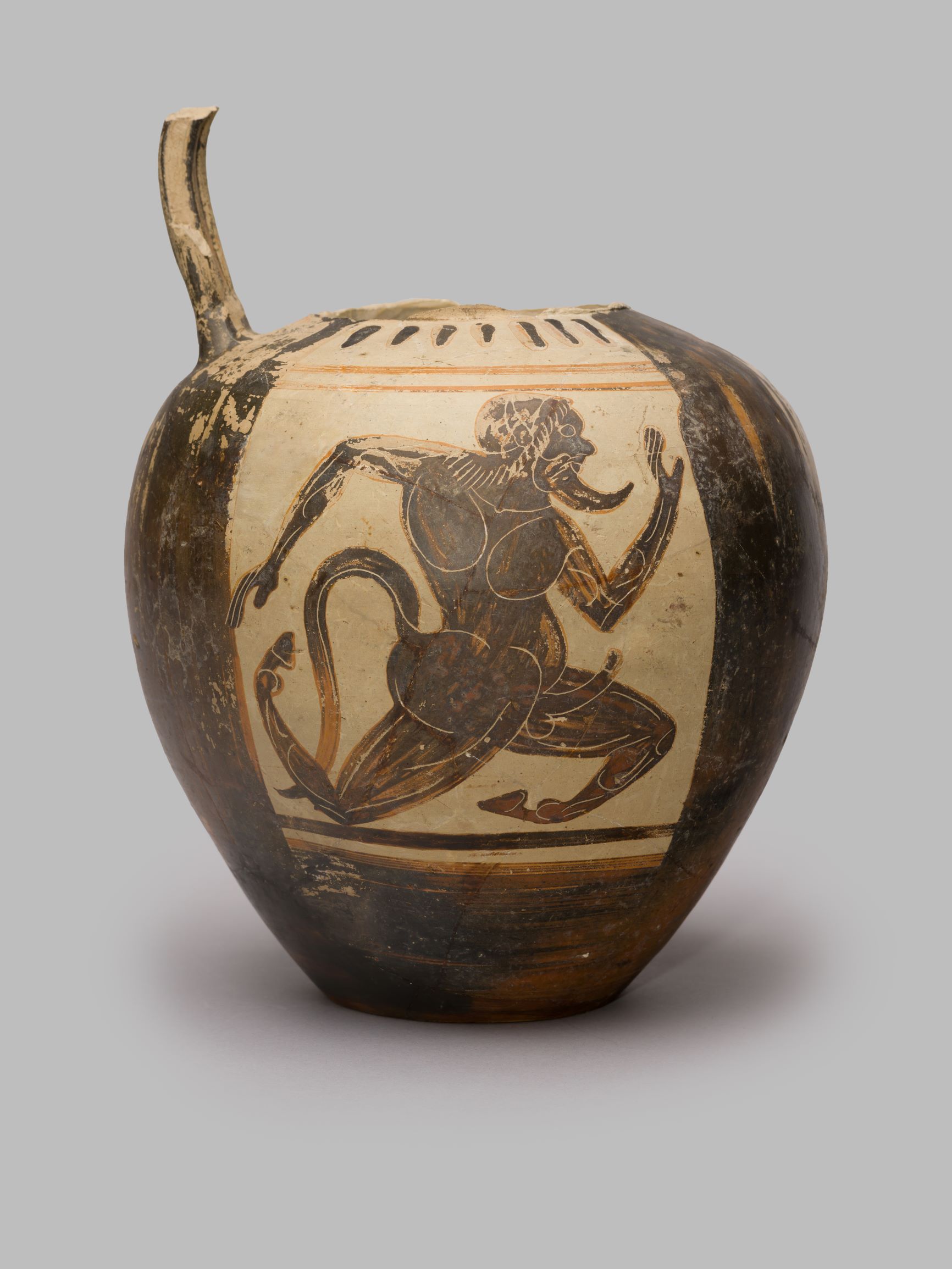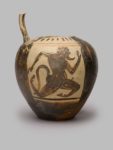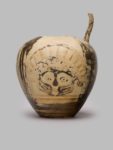
Body of a Neck Amphora [Gr66]
Etruscan Black-Figure, by the Orvieto Group, 510-490 BC
Painted terracotta (h. 21.3 cm, d. 21.5 cm)
A naked satyr running. He has hooves for feet. Muscles, hair and other details are incised. On the reverse a helmeted head, seen face on, with a crest above. Missing the neck and most of both handles. Mended and restored on the shoulder, some parts badly worn.
This vase resembles Greek pottery, but was made in Etruria in central Italy. The Etruscans imported large quantities of Athenian pottery, and by the late 6th century BC several local workshops were making their own imitations of the Athenian black-figure style. The basic techniques used to decorate this vase are the same as those used in Athens, but the pale colour of the clay and the looseness of the drawing result in a very different effect. The art historian Nigel Spivey cites this vase as an example of ‘the cursive, overblown draughtsmanship typical of the [Orvieto] group, with virtually every incision done as a slash or a curve.’
The decoration of this amphora shows the influence of Greek culture. On one side is a satyr, a companion of the wine god Dionysus, who was part man and part goat. Satyrs were known for their voracious sexual appetite, and were often shown in a state of arousal. The helmet on the reverse of the vase is of a Greek type often copied by Etruscan makers.
Literature: J. Falconer and T. Mannack, Corpus Vasorum Antiquorum: Great Britain, Fascicule 19: Winchester College (Oxford, 2002), pp. 19-20, plate 14.11-12; S. Schwarz, ‘Orvieto Vases in the Getty Museum’, in Greek Vases in the Getty Museum, volume 4 (Los Angeles, 1989), p. 178, no. 29a; N. Spivey, The Micali Painter and his Followers (Oxford, 1987), p. 85, plate 39a
Provenance: Discovered in fragments in a packing case in the art-room (above Chantry) in 1935, wrapped in newspaper dated 1904 (with Gr8)
Location: Treasury, Gallery 3

